
Posted on 12/27/2012 6:40:56 AM PST by Homer_J_Simpson



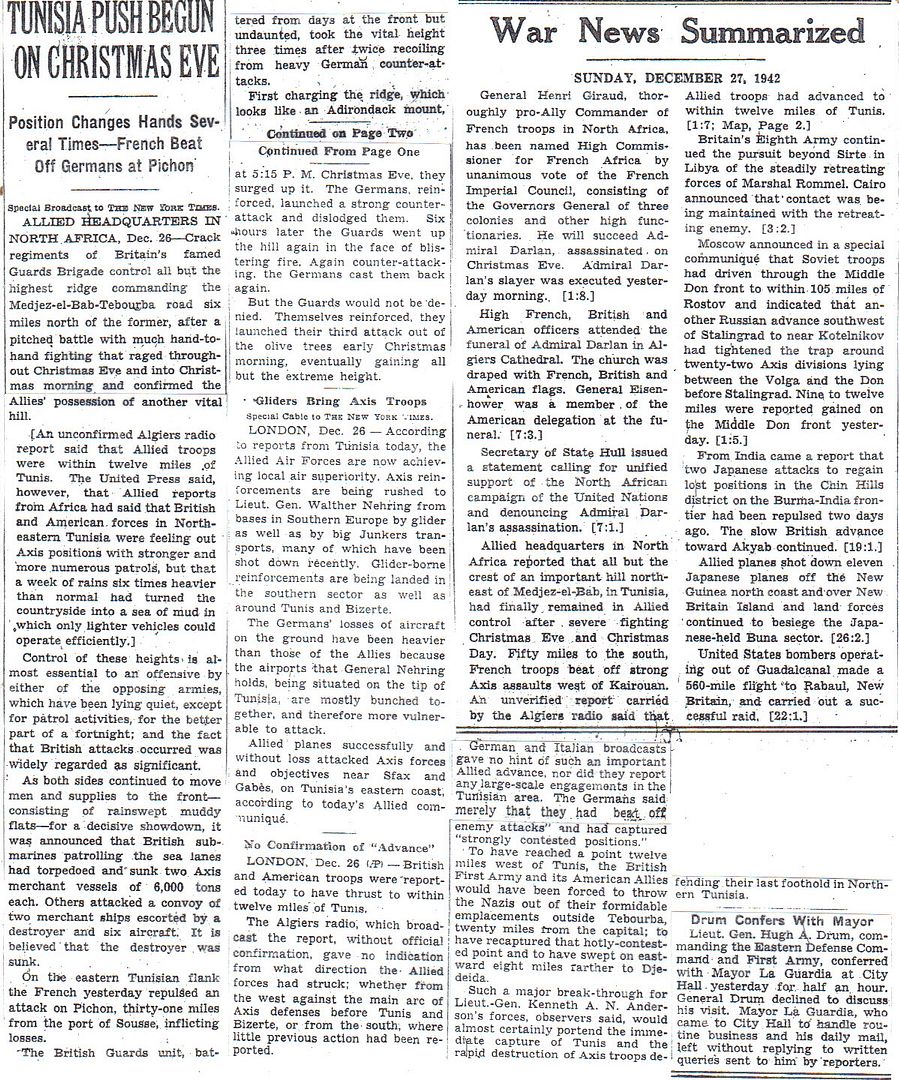




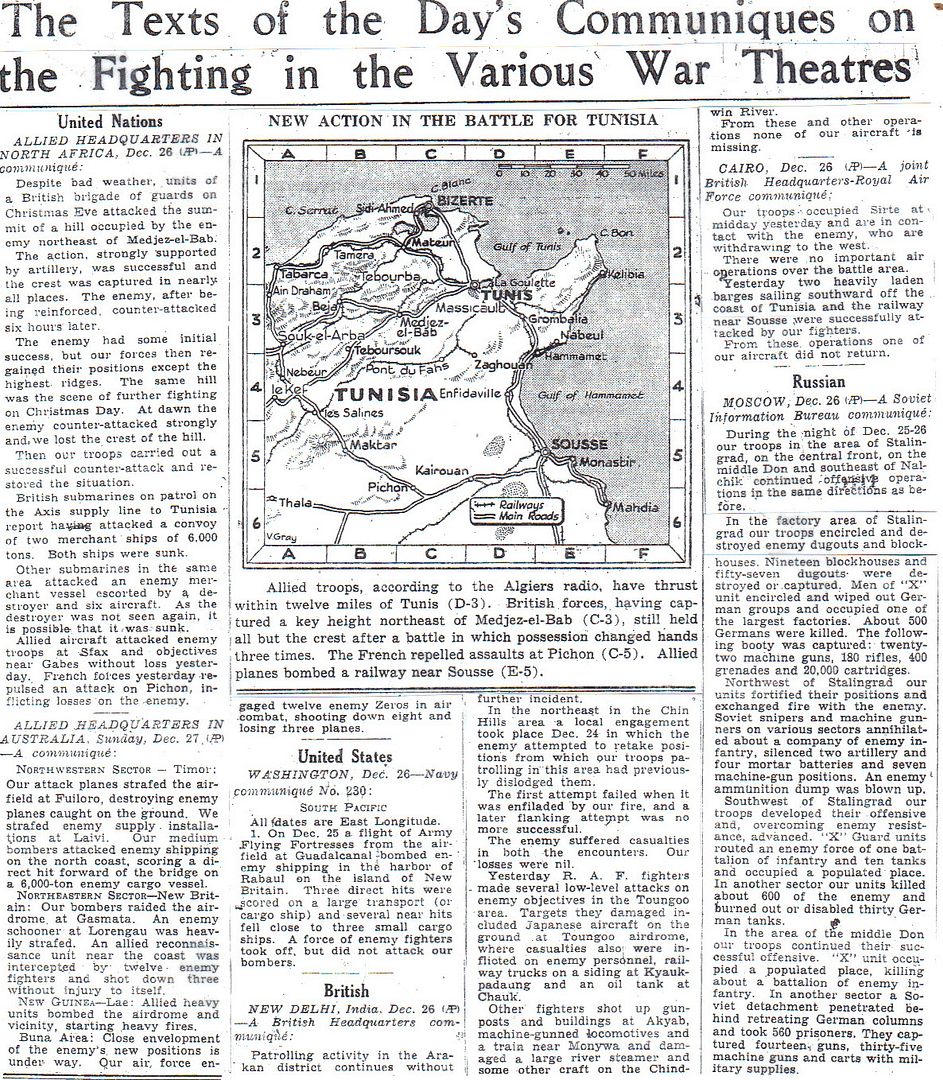


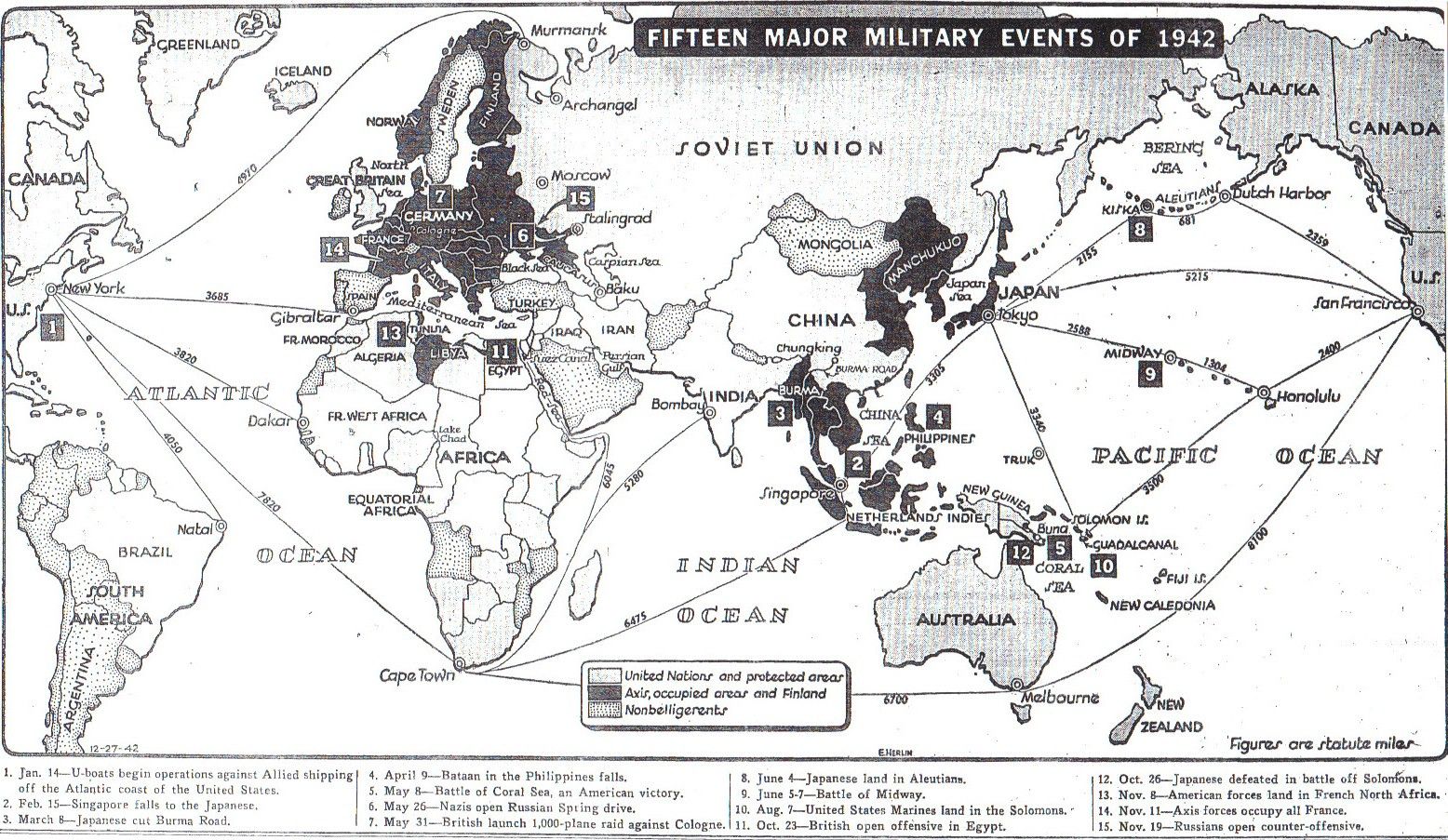
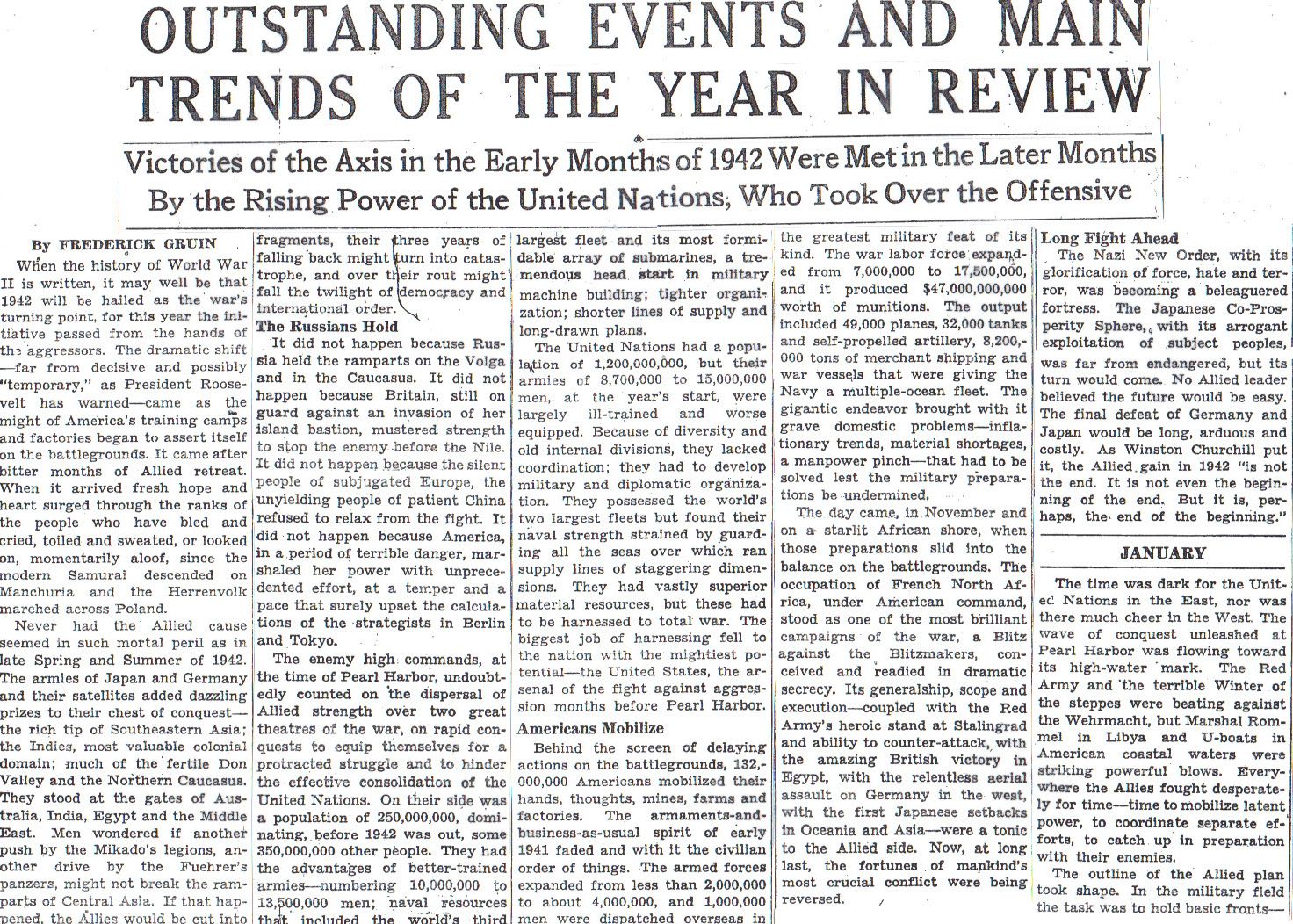
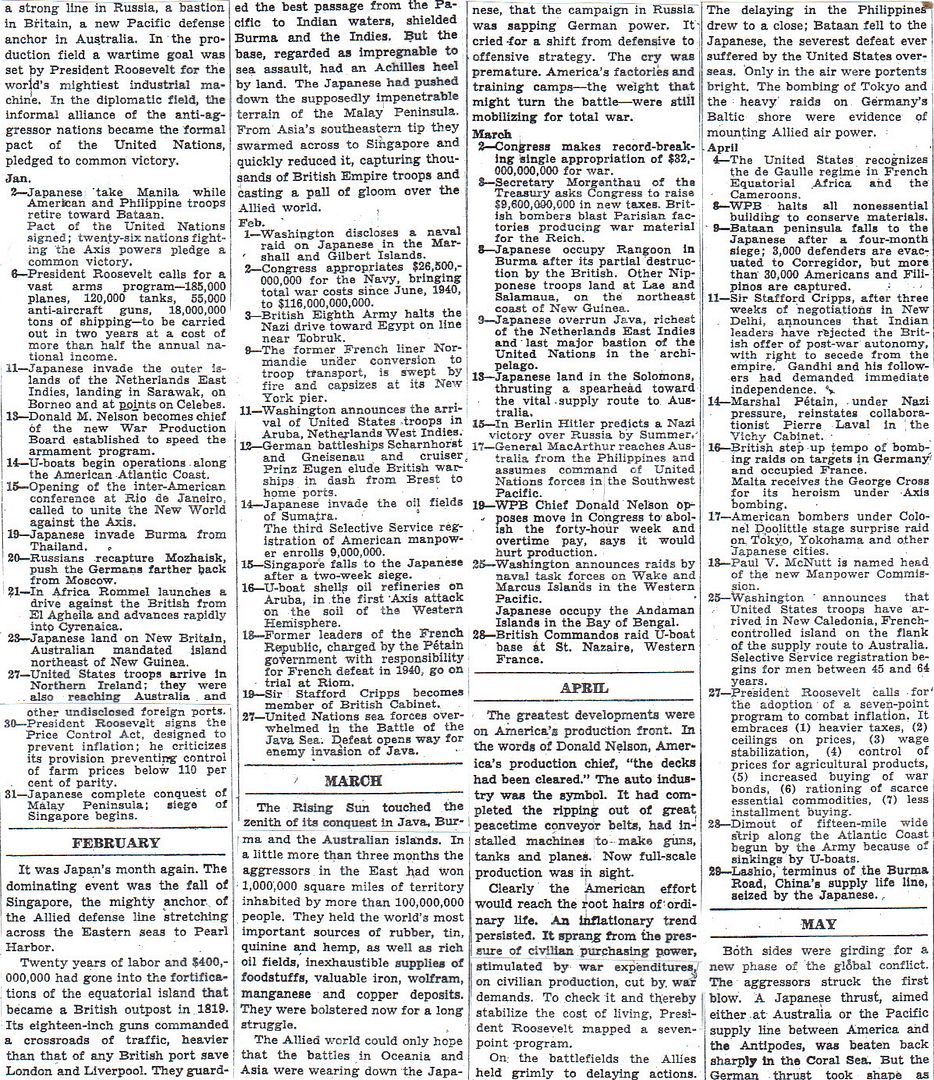
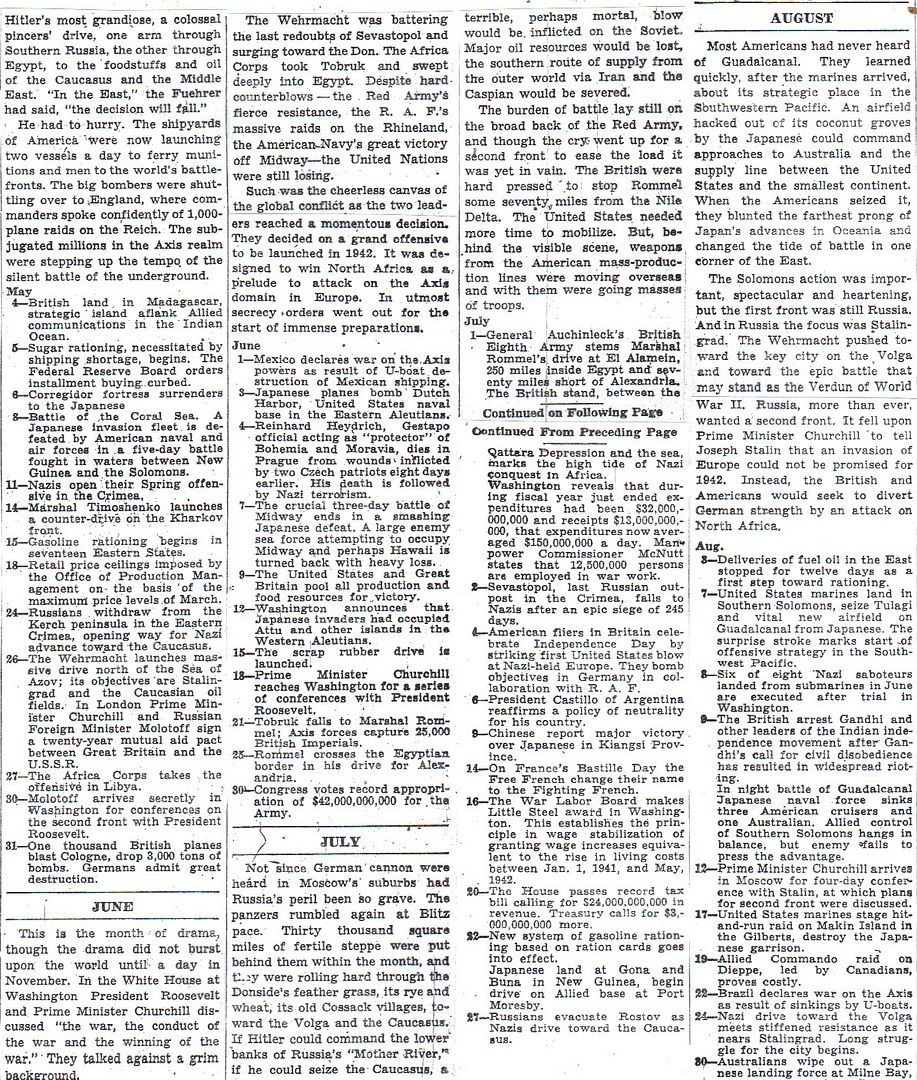
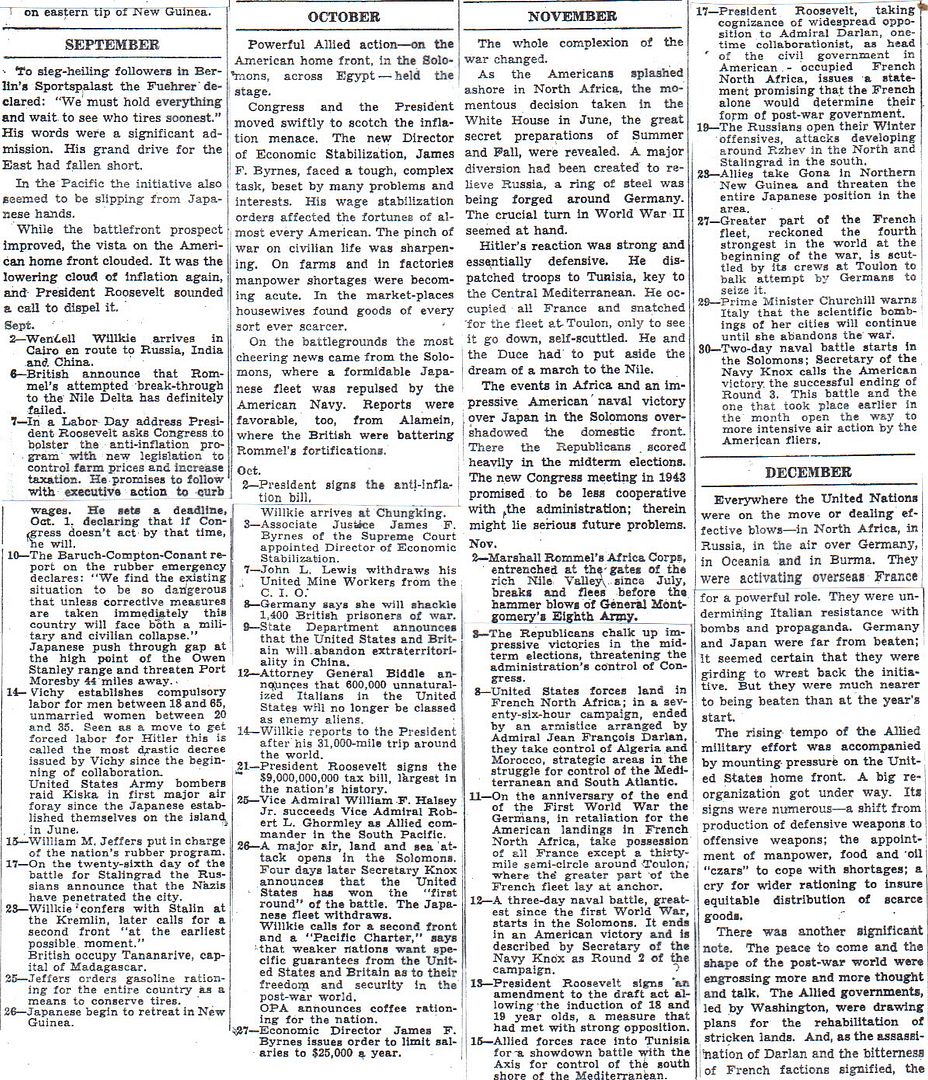
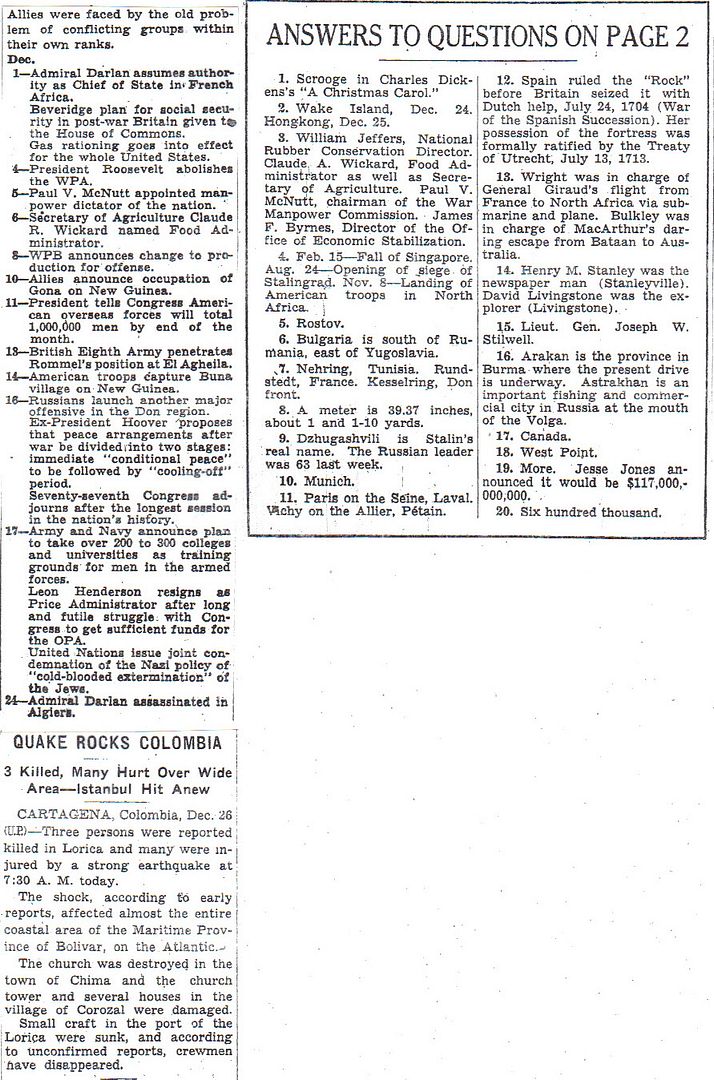
The News of the Week in Review
Twenty News Questions – 11
Fifteen Major Military Events of 1942 (map) – 12
Outstanding Events and Main Trends of the Year in Review (by Frederick Gruin, first-time contributor) – 13-17
Answers to Twenty News Question – 17
http://www.onwar.com/chrono/1942/dec42/f27dec42.htm
Russian nationalist has Nazi support
Sunday, December 27, 1942 www.onwar.com
In the Occupied Soviet Union... Captured Soviet general, Vlasov, forms the Smolensk committee to organize opponents of Stalin under German auspices. This group will later be known as the Russian Liberation Army.
In the Solomon Island... On Guadalcanal, US attacks on Mount Austen renew. Attacking troops from the 132nd Infantry regiment, suffer heavy loses and make no real gains despite a heavy artillery barrage prior to the attack.
On the Eastern Front... The Soviet continue to advance on the Stalingrad fronts. They are also on the offensive in the Caucasus. In the area around Nalchik, six armies under the command of Maslennikov and Tyulenev are attacking. German General von Kleist is beginning to withdraw fearful of encirclement if the armies of the Stalingrad Front reach Rostov to the north.
In Burma... Part of the 123rd Indian Brigade tries to occupy Rathedaung but is thrown back.
http://homepage.ntlworld.com/andrew.etherington/frame.htm
December 27th, 1942
UNITED KINGDOM: Escort carrier HMS Khedive launched. (Dave Shirlaw)
U.S.S.R.: In addition to action in the Stalingrad sector, the Soviets begin attacks in the Caucasus. Six armies near Nalchik, under command of Maslennikov and Tyulenev begin an attack. Von Kleist begins to withdraw as the advance of the Soviet armies in the Stalingrad sector reaches Rostov to his north.
Lieutenant-General Andrei Vlasov forms the Smolensk Committee to organize Russian opposition to Stalin. Vlasov, while enjoying some German support, does not have real support as they fail to understand the difference between a patriotic Russian and his opposition to Stalin.
BURMA: Indian troops reach the tip of the Mayu peninsula, meeting no resistance in their drive towards Akyab, but units of the 123rd Indian Brigade are stopped by the Japanese from occupying Rathedaung.
SOLOMON ISLANDS: The “Gifu” holds out, in spite of artillery support, against probing attacks from the 1st and 3rd Btns of the 132nd Infantry near Mount Austen on Guadalcanal.
NEW GUINEA: Japanese units at Napopo are ordered to withdraw to Giruwa.
CANADA: Patrol vessel HMCS Beaver arrived Halifax, Nova Scotia for refit. (Dave Shirlaw)
U.S.A.:
Submarine USS Batfish laid down.
Minesweepers USS Delegate and Deft laid down. (Dave Shirlaw)
ATLANTIC OCEAN: U-356 is sunk by the escort of convoy ONS-15.
U-73 shot down RAF 500 Sqn Hudson.
The unescorted Oakbank was torpedoed and sunk by U-507 about 200 miles north-NE of Fortaleza, Brazil. The master, 24 crewmembers and two gunners were lost. 29 crewmembers and three gunners were picked up by the Brazilian merchant Commandate Ripper and landed at Recife on 3 January. The Argentinean tanker Juvenal rescued one crewmember and landed at Curaçao on 8 January, while two crewmembers on a raft reached the coast near Para on 15 January. Two crewmembers were taken prisoner and were lost when the U-boat was sunk on 13 Jan, 1943.
Destroyer HMCS St Laurent and corvettes HMCS Battleford, Napanee and Chilliwack sank U-356 north of Azores, 45-30N 25-40W. No survivors a crew of 45. U-356 with a record of sinking 6 ships, was also involved with a number of Wolfpacks, Group “Lotts” (15 Aug-27 Sep) which had sunk 4 ships of a convoy. Group “Pfeil” (13-25 Sep) which had sunk 6 ships of convoy ONS-122; Group “Raubold” which attacked Convoy ON-153. The convoy, of forty-five ships, (ONS-154) escorted by Canadian escort group C1, had been diverted to the south and was out of range of air cover from Iceland when it was sighted on 26 Dec 42 by U-664 one of ten U-boats of the “Spitz” line, which had been lying in wait for ONS-154 since the 24 Dec 42. U-225 damaged SS Scottish Heather, U-356 sank SS Empire Union, King Edward, Melrose Abbey and damaged SS Soekaboemi, U-441 sank SS Soekaboemi. A three-day battle began that night in which the escorts sank U-356, but the “Spitz” U-boats attacked again and again and were joined by another 9 U-boats from the “Ungestum” group, waiting some distance to the west. In one of the worst convoy maulings of the war, 14 ships of more than 73,000 tons were sunk. The convoy Commodore’s ship Empire Shackleton was sunk, and a tanker was torpedoed. Also lost, with all hands, was the special service ship HMS Fidelity. On 30 Dec 42 32 Ships of the original Convoy ONS-154, arrive safely in the UK. (Dave Shirlaw)
He predicts a wider, stubbier car, a higher roof and engines located in the rear; thirty to fifty miles on one gallon of gas; foam-rubber type upholstery; sliding doors; back seat arranged as couch; livable inside space; ventilated air; elimination of instrument panel; indirect lighting; adjustable spring system; probable elimination of springs in lighter cars; non-bouncing tires; independent wheels with knee action.
How much of this came to pass? My '87 Volvo still has an instrument panel, although the speedometer doesn't work.
I read that article with much glee. I think he was, for the most part, describing my 1973 Chevy Vega. It had “engines in the rear” when I pushed it to the shop. That gas mileage was never achieved. The “ventilated air” could have come one of two ways; either through the rust holes in the body, or the air conditioner they actually tried to put on the engine. If you ran the air and came to a stop light, you had to put it in neutral and give it gas or the compressor would kill the engine.
So, yeah, some of this did come to pass. But no way did he forsee the era of muscle cars, like my 1972 Mustang Mach I. It’s a rule of American life that your first car is a beater (the Vega) and your second car is the one you wish you still had when you are 40 (the Mustang was stolen in Chicago while I was at a Cub game, June 23 1984).
Homer: "How much of this came to pass?"
Sounds a lot like the first two cars I ever owned -- a 1956 Volkswagen, about 35 mpg, and a 1969 Corvair, well, maybe 30 mpg... downhill. ;-)
“Former Naval Person to President Roosevelt”
Is that Churchill’s humor?
Vega and also Chevette were American tin can embarrassments. VW comes closest, IMO. The Trabant also had same sized (tiny) engine and extensive plastic panels as foreseen in article...
http://en.wikipedia.org/wiki/Trabi
The engine for the 500, 600, and original 601 was a small two-stroke engine with two cylinders, giving the vehicle modest performance. At the end of production in 1989 the Trabant delivered 19 kW (26 horsepower) from a 600 cc (37 cu in) displacement. The car took 21 seconds from 0 to 100 km/h (62 mph); the top speed was 112 km/h (70 mph) with an official top speed of 100 km/h.
The Trabant was a steel monocoque design with roof, bootlid/trunklid, bonnet/hood, bumpers/fenders, and doors in Duroplast. Duroplast was a hard plastic (similar to Bakelite) made of recycled materials: cotton waste from the Soviet Union and phenol resins from the East German dye industry, making the Trabant the first car with a body made of recycled material.[
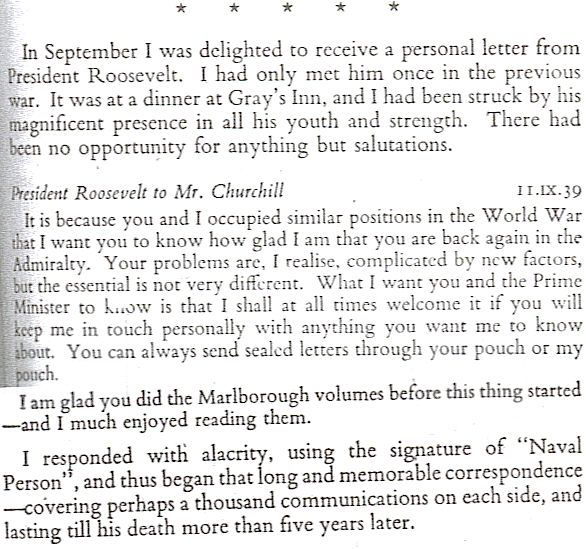
Winston S. Churchill, The Gathering Storm
After he became PM he changed his salutation.

Winston S. Churchill, Their Finest Hour
In 1939, when his correspondence with FDR began, Churchill was First Lord of the Admiralty. He called himself “Naval Person.” After he became Prime Minister in 1940, he changed to “Former Naval Person.”
Churchill’s attempt to bond with FDR using their former World War-1 roles as First Naval Lord and Secretary of the Navy.
Disclaimer: Opinions posted on Free Republic are those of the individual posters and do not necessarily represent the opinion of Free Republic or its management. All materials posted herein are protected by copyright law and the exemption for fair use of copyrighted works.